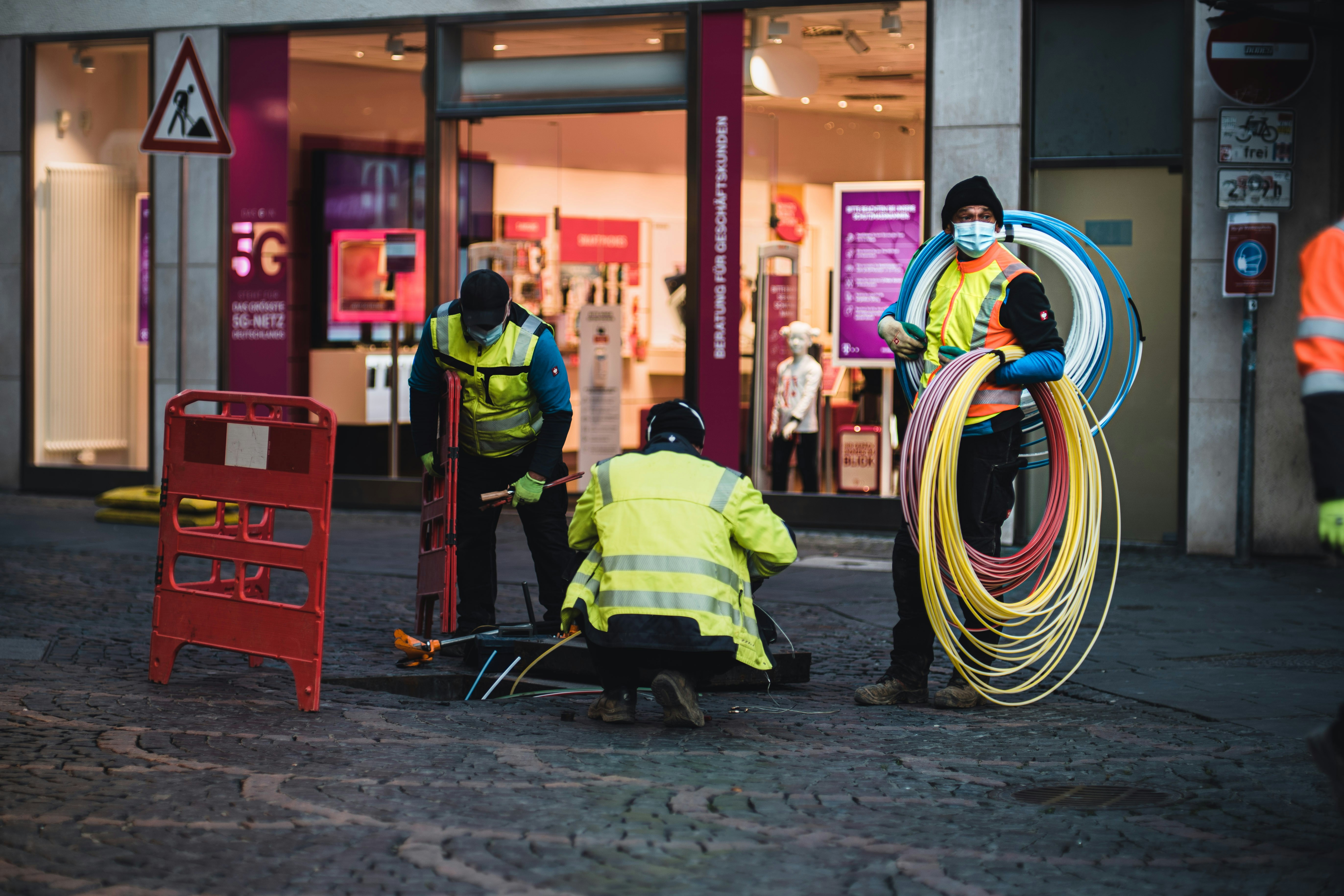Ofcom, the regulator for telecoms and media here in the UK, are beginning the enforcement of new rules regarding how Internet Service Providers use the words ‘Fibre’ and ‘Full Fibre.’
ISP websites and contracts listing terms like ‘Fibre’ and ‘Full Fibre’ will only be able to do so if their service network actually brings their fibre optic cables into your home, under the new rules. This means FTTP, FTTH and FTTB services.
In the past, many ISP’s have misleadingly used terminology like ‘Fibre’ to describe a wide range of internet connection technologies. This has included hybrid or part-fibre solutions involving some copper wiring (like FTTC) or even services using wireless connectivity to cover the final part into homes.
These technologies can actually be a lot slower as well as less reliable than the more modern full-fibre (FTTP) services. It’s these services that take an optical fibre cable all the way into the home.
Network operators, ISP’s and consumers have argued about fibre descriptions for quite a while. And with the roll-out of FTTP (Fibre to the Premises) lines over the past few years, capable of multi-Gigabit speed, this has only increased.
If a consumer believes that they already have fibre, even if it’s only via a FTTC (VDSL2) line that is a lot slower, that consumer is more unlikely to consider upgrading to FTTP.
This isn’t the first time the distinction between ‘fibre’ services has tried to be corrected. The Advertising Standards Authority attempted a review, but it was ineffective. CityFibre also attempted a court challenge, but this also failed.
Then in 2021, GigaTAG (the Gigabit Take-Up Advisory Group) made a proposal to change several things, one of which was the clearer labelling of broadband packages. This was so consumers could better understand the differences between technologies, and this was successfully adopted by Ofcom at the end of last year.
As of today, 16th September 2024, the new guidelines for residential and small business services have been formally introduced and enforced by Ofcom. Better late than never!
It’s important to note that this doesn’t yet apply to advertising. Ofcom doesn’t cover advertising, as that is the remit of the Advertising Standards Authority. So let’s hope the ASA follows suit.
Ofcom’s New Guidelines on Fibre Terminology
The below are a summary of points from Ofcom’s website.
- Providers should give a short description of the underlying network technology of each broadband product using one or two terms that are clear and unambiguous, such as ‘cable’, ‘copper’, ‘full-fibre’ or part-fibre’. These descriptions should be offered at point of sale on the website, and before the final purchase in contract information, and in the contract summary;
- The term ‘fibre’ used in isolation is ambiguous, so it should not be used on its own to describe the underlying broadband technology. This would mean, for instance, that ‘full-fibre’ (or a similar term) is only used to describe networks which use fibre-optic cables all the way from the exchange to the home. Similarly, ‘part-fibre’ (or a similar term) would describe those services with a fibre-optic connection from the local exchange to the street cabinet and then usually a copper wire connecting the street cabinet to the customer’s home; and
- Providers should give a more thorough explanation of the underlying broadband technology – for example through a link – so that consumers can understand in more detail what it means for them. This information must be provided in an accessible form that is easy to understand.
Underlying technology information should be given to consumers irrespective of how they sign up for a service. Under Ofcom’s new guidance, those signing up online will be given this information on the broadband provider’s website. Those purchasing a service over the phone or face-to-face will be provided with this information in the Contract Summary and in the contract itself. A Contract Summary with key information on the service must be provided before the customer confirms the purchase.
Ofcom have concluded that this is the most proportionate approach to ensure appropriate information is provided to consumers and reduce customer confusion, while limiting the costs of implementation.
9 Months to Welcome Change
Ofcom announced this change back in December of last year, giving ISP’s plenty of time to implement changes.
Thankfully, a good chunk of the telecoms industry, noticeably the more alternative full fibre networks, have welcomed this change.
But is it too late to make a difference? The terms ‘Fibre’ and ‘Full Fibre’ have long been dished out by ISP’s – Will the new change from Ofcom actually change the perspective of consumers? Years and years of misuse of these terms will mean that it’s entrenched in the subconscious mind of consumers – Can it be changed and will we see a positive impact?
Some ISP’s have already adjusted their approach to communicating their broadband services with consumers. Let’s remember that many if not most consumers pay a lot of attention to service speed and price, and less to what is seen as industry jargon.
One example of the changes being implemented is from Sky Broadband who have re-labelled their packages according to the new rules. Their broadband packages are now described as:
- Copper (ADSL)
- Part Fibre (FTTC/ G.fast)
- Full Fibre (FTTP)
Who will be next?



